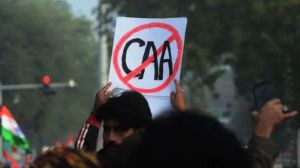Leaving a stamp on history
The year 2008 will mark the 125th birth anniversary of Sir Mirza Ismail — a great Mysorean, an Indian who made us proud, a quintessen...

The year 2008 will mark the 125th birth anniversary of Sir Mirza Ismail — a great Mysorean, an Indian who made us proud, a quintessential political conservative, a remarkable person in public life, who believed that persons entrusted with overseeing the welfare of people should in fact pursue that aim! The postal department can have no excuses for not scheduling a function in Sir Mirza’s beloved Mysore to release a splendid stamp. Surely between now and 2008, the department should be able to complete their formalities.
Mirza Ismail was the Dewan or Prime Minister of the erstwhile “native” state of Mysore for 15 years. He was appointed Dewan in 1926 by Maharaja Krishnaraja Wadiyar. Within a year of the great Maharaja’s death, Sir Mirza retired from Mysore and moved on. My grandfather Nagavar Madhava Rao, who joined as a young probationer in the Mysore Civil Service in the 1920s, referred to the Krishnaraja-Mirza period as the “golden age” of Mysore.
Sir Mirza was committed to the progress and development of Mysore. His memorable insight into government behaviour was: “No amount of income is of any avail if the government is incapable of spending it wisely”. Sir Mirza had three broad focus areas in his vision for Mysore. The first was the development of its human capital. In town after town, he pushed for the opening of schools for boys as well as girls. He would convince wealthy people to make philanthropic donations promising to name a building or a wing after their loved ones. He insisted on well-stocked public libraries being set up in all reasonable-sized towns. He was a strong supporter and patron of the Central College in Bangalore, of which he was an alumnus as well as Maharaja’s College Mysore and the Indian Institute of Science. Women’s education was passionately embraced by his wife.
His second area of interest was physical infrastructure. He was a supporter of irrigation as a necessary foundation for Indian agriculture. Writing in 1954, he noted that “huge irrigation works at a staggering cost are taken up with alacrity but sufficient attention is not being paid to minor irrigation works which would yield a quick return at a comparatively small cost.” Sir Mirza was proud that Mysore had been a pioneer in the introduction of electricity. He extended this further setting up hydro-electric stations at Shimsha and Jog. He was bold enough to go in for rural electrification, albeit in a fully-paid economically sensible manner. He persuaded Sir M. Visveswaraya to chair a committee which led to the construction of the Chamaraj reservoir at Bangalore “which can supply nine million gallons daily should monsoons fail for three years”. But he left behind prophetic words for his successors: “the administration would be well advised to look ahead and prepare a scheme to ensure at least double the present supply”.
His third commitment was to the industrial progress of Mysore. He “was able to start or help to start some 25 different industries”. He was no doctrinaire conservative. He dealt head-on with criticisms of being a state socialist arguing that in an environment where “private capital is shy”, the state’s “temporary control of an industry” with the aim of “encouraging ultimate private control” was the correct course.
Light taxation, minimal interference in the lives of its people and a commitment to an environment where people could aspire to progress and prosperity…these were the hallmarks of Sir Mirza’s Mysore. Mahatma Gandhi was pleased by what he saw and he referred to Mysore as Ramrajya. Lord Willingdon, the Mahatma’s political opponent, wrote to Sir Mirza saying “You’re a wonder. Go on and all luck go with you.”
From Mysore, Sir Mirza went to Jaipur where his achievements included cleaning up and beautifying Jaipur, laying the foundation of a new university, a new medical college, and so on. Cecil Beaton gave him the ultimate aesthetic compliment. “Sir Mirza is the arch-enemy of corrugated iron sheets, brass bands and of almost everything else that is crude and vulgar…” The main thoroughfare of Jaipur has been named M.I. Road.
Moving from Jaipur to Hyderabad, Sir Mirza’s luck ran out. Not only was the Nizam unrealistic, but he was under the control of (in Sir Mirza’s words) “that wretched band of foolish Muslims called the Ittehad-ul-Muslameens….They were bent upon moving heaven and earth to see me out of Hyderabad”. A Shia by birth, he consistently supported Sanskrit learning, Hindu Mutts and Christian institutions because in his own words “one pleases the Almighty even more by serving other faiths than one’s own. Paradoxical as that may sound, I believe it is, nevertheless true, for to serve other faiths calls for something more vital than passive tolerance.” Hindu fanatics had tried to pressure the Maharaja of Jaipur to get rid of his Moslem Dewan. The Maharaja to his credit, refused. The Nizam was obdurate and lost a good advisor in difficult times.
In forgetting the likes of Sir Mirza, it is we the Indians of to-day who will stand small and tarnished. I rest my case with the postal authorities.
The writer is chairman and CEO, Mphasis. Write to him at jerryrao@expressindia.com



- 016 hours ago
- 027 hours ago
- 038 hours ago
- 048 hours ago
- 058 hours ago




























